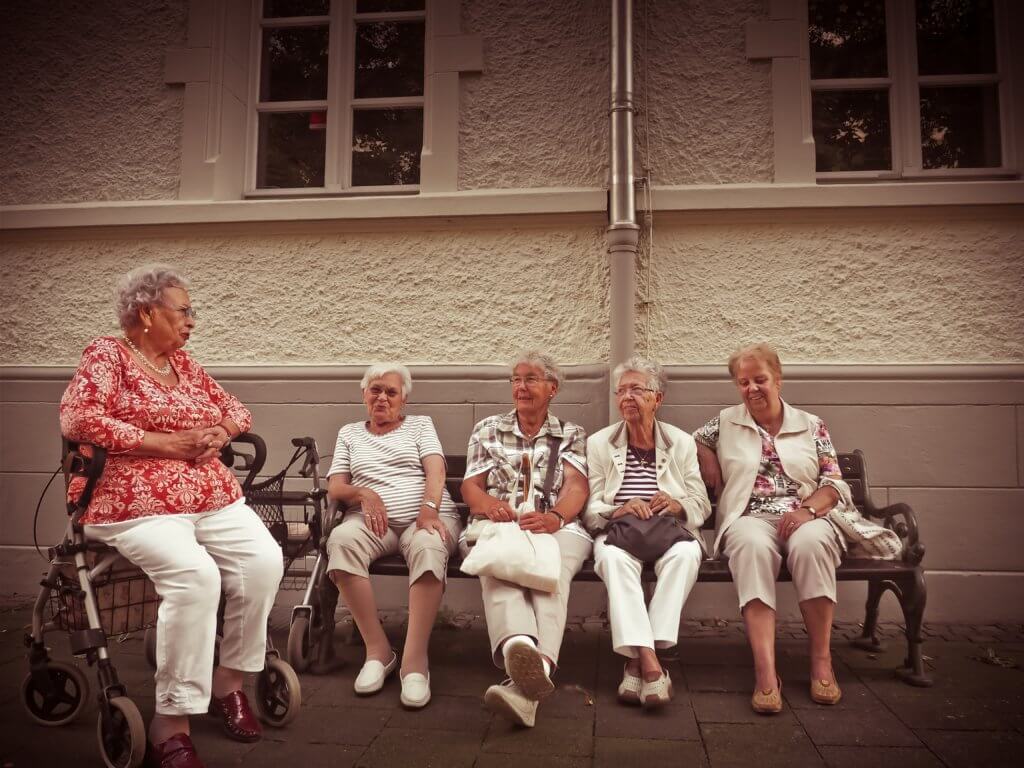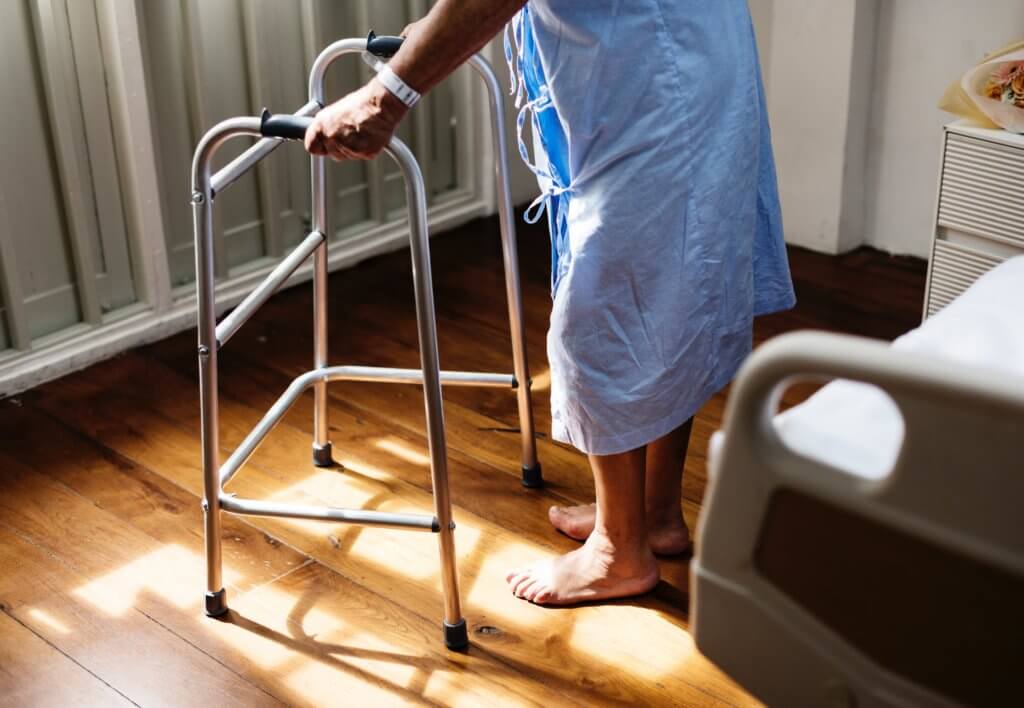Home Care vs. Care Homes: The No-Nonsense Guide

For many older people, the ageing process isn’t always a walk in the park.
You might not be able to do the things you used to. Maybe you’re developing health problems. Perhaps you feel you’re losing your independence.
If you or your loved one is struggling with the ageing process, it could be time to consider seeking professional support. But with so many options out there, how best to decide on your course of action?
Taking the first step
Have you or your loved one reached the point where living completely independently without care, help or support is no longer viable? It can be hard to accept. Humans, by our very nature, are stubborn. It’s common for people to move the goalposts as they age with regards to what they believe they are still able to do, in spite of their advancing years and the concurrent physical and medical problems that can occur.
However, there is no shame whatsoever in admitting that you or your loved one can no longer cope without assistance in one form or another. What signs suggest that professional help may be worth seeking?
- Daily tasks that would ordinarily be second nature have become arduous or downright impossible
- The individual is struggling to cope because of their physical or mental health
- They are in need of increased assistance or supervision with medication
- They have few or no friends or family to look out for them and provide informal support
When it comes to care for the elderly, there are several options available to you:
- Care home. Residential space with onsite care professionals.
- Nursing home. Often used interchangeably with care home, a nursing home is actually a specific type of care home, with at least one qualified nurse onsite 24/7. Nursing homes are more appropriate for residents who have medical requirements beyond the scope of the support provided by a care home.
- Sheltered housing. Self-contained property but with care professionals available 24/7 to help with both personal and domestic care requirements. A place in sheltered housing can be bought or rented from the local authority, a housing association or a private company. They allow individuals to remain as independent as possible whilst providing key support where necessary. A sheltered house may be part of a larger retirement village or complex, with extensive facilities and leisure activities on offer.
- Home care. A care professional visits — or lives in — the home of the service user, delivering care bespoke to the specific needs of the individual.
When deciding which type of care is best for you or your loved one, you’d think it helpful to consider some hard data on what has worked best for others. However, directly and reliably comparable data on care options are thin on the ground and are further hampered by a number of issues. Which source should one trust when seeking care for the elderly? Whose authority supersedes whose? Every individual’s needs are different and unique — so how best to know which type of care is most appropriate?
Everyone deserves a happy and comfortable home
What does ‘home’ mean to you? Relaxation, security, memories? Furthermore, what makes a good home in later life? Is it proximity to family and friends? Being surrounded by one’s own possessions? Overcoming the potential obstacles that come about as a result of the ageing process, such as stairs, bathing, a large garden to tend to?
Whatever the needs of you or your loved one, remember that everyone has the right to a home that is safe, comfortable and dignified. No-one should feel frightened about how their ageing might affect their living situation.
Our guide to the differences between, and pros and cons of, home care vs. care homes — and everything in between — will assuage your concerns, as well as further inform you on how you can fund your care, what kind of care is right for you and what to look for when choosing a care company.
Demographics
In the vernacular of healthcare, an ‘older person’ is generally defined as being aged 65+.
Health and the ageing process
The UK has an ageing population.
- There are 12 million Brits aged 65+
- 5.4 million are aged 75+
- 1.6 million are aged 85+
- 0.5 million are aged 90+
- There are 15,000 centenarians currently living in the UK
Older people living at home, especially on their own, can often go unacknowledged until they themselves make contact with healthcare professionals. 70% of older people are unable to perform at least one IADL (instrumental activity of daily living), such as managing their money, cooking and shopping, or have difficulty performing at least one ADL (activity of daily living), such as eating, bathing, dressing or toileting. It is clear that a great proportion of those older people who are living alone are in need of care they are simply not receiving.
As the name suggests, instrumental activities of daily living are not vital to survival but are nevertheless crucial constituents of what most people would call an independent lifestyle. The consequences of being unable to perform ADLs, however, can be far worse.
Take the maintenance of a good diet. Older people suffering from malnutrition are markedly worse off than those of the same age who follow a balanced diet. Such individuals are
- Twice as likely to visit their GP
- More likely to go to hospital
- Likelier to spend longer in hospital
- More likely to suffer more frequent — and more severe — ill health
Older people are disproportionately represented in malnourished groups in the UK. 43% of malnourished individuals are 65+ — but 93% of these individuals are living independently, not receiving professional care. You’d be hard pressed to find a statistic more illuminating of the importance of care for older people.
Loneliness and social isolation
3.8 million older people in the UK live alone, 58% of whom are 75+.
Living by themselves undoubtedly compounds some of the issues these people face. In some cases, independent living exacerbates their problems considerably. Older people living alone are more likely to
- Attend A&E
- Visit their GP
- Have 3 or more long-term physical health conditions
- Suffer from a mental health illness
The latter point highlights just how psychologically damaging living alone can actually have be for an older person. Loneliness and social isolation are major issues in healthcare, especially for older people. The two are not synonymous, though:
- Social isolation. Objective measure of amount of social contact. A measure of quantity of relationships, not quality.
- Loneliness. Subjective feeling of difference between desired level of social contact and actual. Linked to perceived quality of relationships. Undoing the damage of loneliness can take a long time.
Persistent loneliness can have a significant impact on wellbeing and quality of life in general. Individuals who are most at risk of the damaging effects of loneliness are those who are
- Living alone
- Widowed
- In poor health
- Unable to live independently
- Feel they don’t belong
These are all characteristics classically found in older people. Furthermore, older people experiencing chronic loneliness are
- Likelier to develop cardiovascular disease
- At increased risk of premature death
- More likely to develop dementia

49% of older people say that their TV and pets are their primary form of company. The sad truth is that, not only are a great many older people suffering the consequences of a lonely life, but they would appear to have no alternative way of life available to them. If they did, the net benefit could be remarkable, as every £1 invested in tackling loneliness can save £3 in health costs.
One option, which is of course highly dependent on individual circumstances, is to have a loved one acting as a caregiver. But without proper training or support for themselves, how might acting in a full-time unpaid care role affect a person?
The cost of being a caregiver
There is currently a major deficit in professional support for older people, with only 22% of the UK’s funding authorities currently able to meet the demand. 78% of individuals aged 75+ live in areas where there is insufficient provision of help on offer for their age-related needs.
Furthermore, there is wide variation in the percentage of funding authorities that can currently meet demand based on what service is required:
- Standard care home: 81%
- Care home with dementia support: 60%
- Standard nursing home: 57%
- Sheltered housing: 50%
- Home care: 46%
- Nursing home with dementia support: 37%
For this reason, the friends, family and wider social network of an older person in need often take the reins, providing informal care themselves. 12.5% of British adults define themselves as carers and 60% will become a carer at some point in their lives. The average man aged 50+ will spend 4.9 years of his remaining life as an unpaid carer; for women aged 50+, the figure rises to 5.9 years. 65% of carers have a disability or health problem themselves. What happens when this becomes a role akin to being a full-time carer but without any of the training, resources or support?
- The unpaid work of a full-time informal carer equates to, on average, £19,336 a year.
- 30% of carers will see a drop of at least £20,000 in their annual earnings as a result of their role.
- 32% of carers subsidise their role by cutting back on essentials in their own lives, such as food, heating and fuel.
- 44% of carers end up in debt as a result of their role.
- 45% of carers report that the financial circumstances of their role have negatively impacted their health.
- 69% of carers report that their role has had an adverse effect on their lives, whether in terms of education, employment, finances, health, relationships or wellbeing.
Many unpaid carers, despite being aware of the impact the role is having on their lives, resign themselves to being beyond help, either financially or emotionally. Emotional support comes in many forms; it can be nebulous and unpredictable if you’re feeling isolated by your role as a carer. Financial support, though, is actually more available than you might think.
Publicly subsidised care support
You may be eligible for financial help from your local council — or, in some cases, the NHS or DWP. There is, however, significant national variation in the monetary support those in need are eligible for, as outlined by data sourced from the Family and Childcare Trust.
|
Country |
Average weekly subsidy available | |||||
| Standard care home | Care home with dementia support | Standard nursing home | Nursing home with dementia support | Sheltered housing | Home care | |
| England | £492 | £527 | £586 | £611 | £544 | £311 |
| Northern Ireland | £514 | £507 | £605 | £627 | £584 | £327 |
| Scotland | £576 | £640 | £628 | £715 | £616 | £344 |
| Wales | £534 | £543 | £647 | £654 | £578 | £319 |
| UK | £529 | £554 | £616 | £652 | £580 | £325 |
Assessment and eligibility
The local council will conduct an assessment of the service user. It’s a good idea to have a friend or relative present during the assessment for emotional support, especially if the service user is vulnerable. Accepting that one needs professional care can be an unwelcome milestone for some people and it’s important for loved ones to rally around them at this time. If the service user has no-one who can be present, the local authority will provide an independent advocate to help make sure proceedings are fair and ensure the best possible outcome for the individual.
You are likely eligible for publicly subsidised care support if the entirety of your assets is worth no more than
- £23,250 (England and Northern Ireland)
- £27,250 (Scotland)
- £40,000 (Wales)
If you are ineligible but your assets later fall below the country-designated threshold, you are perfectly within your rights to request a reassessment.
The assessment covers a multitude of factors, ensuring a holistic approach to the care needs of the individual:
- Financial means test of income, savings and assets, to determine whether the individual is able to fund their own care or if they are eligible for publicly subsidised care support — and, if so, to what extent
- What IADLs and ADLs can the individual still manage on their own?
- What would the individual like to achieve?
- What, if any, informal support and care will the individual be receiving from loved ones?
- What kind and level of care does the individual require?
- Where would be most appropriate for them to receive this care?
- How much is the total care required estimated to cost?
- Who will arrange the care?
The assessment is by no means a one-size-fits-all template. A great deal of the content will establish the individual’s needs on a far more personal level:
- What are the individual’s specific medical, emotional and psychological needs?
- What medication are they taking, if any?
- Do they have memory problems?
- What physical challenges do they face, e.g. hearing difficulties, mobility issues, poor sight, impaired balance, incontinence?
- How suitable is their home for them? What potential hazards are there?
- What are their hobbies, their interests? Do they exercise?
- What kind of food do they like to eat? Do they have any specific dietary requirements?
- What relationships do they wish to maintain?
- How able are they to get around, e.g. in the garden, to the shops, around the local park?
The assessment is an invaluable way of finding out whether you’re actually eligible for more than you realised, and you may learn a great deal about the next steps you should be taking in your care process. A written copy of the care and support plan will be drawn up, even if you are ineligible for publicly subsidised care support. Your local authority has a duty to review it at least annually in order to continue meeting the care objectives agreed upon.
To initiate the care support assessment, contact the Adult Social Services department of your local authority (or the Health and Social Care Trust if you’re in Northern Ireland).

Getting the most out of the assessment
If you have requested a care support assessment, chances are you would like to begin acquiring professional care and support as soon as possible. Therefore, you’d be wise to prepare for the assessment by making sure you have all the relevant documentation and details to hand:
- Medication details: what, how much, how often
- Medical reports (although oftentimes these will have been sent from GP to Adult Social Services/Health and Social Care Trust upon request of the assessment, but best to have them ready just in case)
- Financial details
- Bank/building society statements
- National Savings and Premium Bond certificates
- Stocks, share and any other financial products
- Pension entitlements and any other income, e.g. benefits, rental income, income from business interests
- Property value
Moreover, it’s crucial that the assessment is approached with the right attitude:
- Note down what IADLs and ADLs can still be managed alone and which require assistance or are unachievable
- Bring your own ideas to the table about needs can be met or managed
- Have any questions for the local authority ready
- Mention anything you feel is relevant that the assessor has not brought up
- Don’t downplay your or your loved one’s needs; be honest and do your best to accept the fact that help is needed, as doing so means you’ll receive a much more thorough and accurate assessment
Finally, it’s important to note that you may be eligible for authority-funded care even if you surpass the financial threshold that would otherwise inhibit you from accessing it. You or your loved one may still be eligible if
- The care needs are caused by physical or mental impairment or illness
- Not receiving publicly subsidised care support would directly and significantly impede wellbeing
- Two or more specified daily activities are unachievable
- A specific daily activity is not unachievable per se but
- Takes a significantly long time to complete
- Causes the individual significant pain, distress or anxiety
- Likely or actually endangers the individual’s or others’ health or safety
But what if you’re not eligible for publicly subsidised care support?
The cost of care
When self-funding, the cost of care varies widely and depends on a number of factors:
- Type of care
- How often care is required
- Location
- Care package
Regional and national variations notwithstanding, costs are also contingent on how specialised the care is and, if residential, the quality of the resources, how pleasant the aesthetics of the surroundings, the credentials of the staff… the list goes on.
Let’s compare the average costs of your options.
-
- Residential care
- Care home: £27,000–£39,000 per annum
- Nursing home: £35,000–£55,000 per annum
- Residential care
- Sheltered housing: Based on local rent prices, so £300–£700 per month, with further charges for support starting from £90 per month
- Home care: £14,000 per annum for 14 hours per week, at least double for full-time care and up to £83,200 per annum for a live-in carer providing support for complex needs (in the latter case, residential care is often more cost-effective)
There are several ways of funding care if you’re ineligible for publicly subsidised care support:
- Sell your home
- Take out a deferred payment agreement (paying either once you’ve sold your home or you have passed away, using your property as collateral)
- Rent your home out
- Release equity
- Use income and savings
- Use income from investments
- Use pension savings or drawdown
- Buy care annuity
- Use third-party top-ups
So you’ve got your funds in order and you’re ready for the next step. But how on earth are you meant to be well versed in the pros and cons of all the different care options, what each one entails and which is best suited to your situation when this is all entirely new to you? Luckily, we’ve got your back.

Residential care
‘Residential care’ is an umbrella term encompassing both residential homes (care homes and nursing homes, the latter being a specialised care home more suited to those with complex medical needs and where at least one qualified nurse is onsite 24/7) and sheltered housing.
Choosing a residential home
There is a multitude of things you or your loved one will need to consider during the transition from independent living to residential care. Costs aside, what is it you’re looking for in a residential home?
- Staff credentials
- Support services provided
- Location
- Is it convenient for friends and family to visit?
- Is it close to places the individual would like to get out to go to?
- Decor, garden, aesthetics
- Activities and entertainment
- Trips out
- Internet access
Of course, it’s all very well that a residential home has wonderful facilities, staff with top-notch credentials and a wide variety of activities on offer, but it means diddly-squat if residents do not feel that they are safe, respected and, frankly, at home.
The best residential homes
- Treat residents as individuals
- Ensure residents are mentally stimulated, physically active and socially engaged
- Respect residents’ cultural, spiritual and emotional needs
- Ensure residents are not only receiving the right care, but the very best
Always check the objective quality rating of the residential home that you are considering by reading the inspection reports and checking the scores it has been awarded by regulatory bodies. Make several visits before committing to it — and at different times. Visiting at a variety of times ensures you get a broader impression on how the residency is run overall, rather than getting only a snapshot of its inner workings after a single visit. Take a friend or relative along to get a fresh pair of eyes on the place.
How to make the right judgement
Once you’ve settled on somewhere you think is great, the next step is registering your interest and initiating the process of moving in. Request vacancies and, if relevant, enquire as to how long the current waiting list is. Talk to other residents; their experiences and opinions are hugely valuable, especially as a home might sometimes put up a façade of, frankly, being a better place than they really are when a prospective resident comes to visit. You might even ask whether there is any possibility of a short stay, just to try the place out and assess the care provided.
It can be a little overwhelming taking in even one potential new home, never mind several at once, so it’s a good idea to have some set questions prepared to ensure you finish your visits well equipped to decide on which residential home is right for you or your loved one. As well as requesting their brochure and price list, you might want to enquire after
- What is provided. You want a comprehensive understanding of exactly where your money is going.
-
- What is not provided. This can be a crucially differentiated question from enquiring after what is provided because, unless directly asked, a home might be reluctant to divulge what facilities or support services they do not currently have on offer.
- What additional expenses are charged for. Are haircuts included in the price? What about trips out, pedicures, transport into town?
- What training have the staff had? Has every member of the team been well vetted and checked by the DBS, briefed on every individual resident’s needs, thoroughly educated on how to provide care and support services to the highest possible standard?
- The length and nature of the contract. How easy is it to terminate the contract if you’re unhappy with the service provided or you find a superior residential home?
- What happens if the resident’s care needs change. The ageing process can take unexpected twists and turns. You need to be confident that the staff are well prepared for a fluctuating pattern of care requirements and are fully malleable in adapting their support accordingly.
- What happens if the individual paying for the care runs out of money. If there are no funds coming in to support the resident’s care, things can get complicated and emotionally draining. It’s always best to be prepared for the worst-case scenario.
Embracing the transition
You or your loved one will get the most out of moving into residential care if you accept that things can’t carry on as they are without the aid of professional care and support. By remaining open-minded and positive, there’s no need for the move to be distressing.
Once the move is complete, the new resident can do lots of things to assimilate into their new home and adjust their mindset to one of optimism:
- Make it a home. Surrounding one’s living space and bedroom with personal effects, sentimental items and nostalgic possessions, e.g. paintings, books, photographs, cushions, TV, even furniture if possible. Bringing the very best parts of one’s old home along can truly work wonders. Just make sure the bedroom or living space is kept locked and secured when left unattended.
- Ask questions. This is your home now as much as it is any other resident’s. Don’t be afraid to find out what’s what and who’s whom.
- Stay in touch with loved ones. Get family and friends involved in your life; keep them abreast of what you’re up to.
- Keep busy! Immerse yourself in the activities and with the culture of the home. You might just be amazed at the difference it can make in your emotional wellbeing, even if ingratiating oneself with a group of strangers might seem like the hardest thing in the world for some people.
Residential care and support isn’t right for everyone. It might not be cost-effective. There may be logistical, practical or familial reasons that mean the individual simply cannot leave their home. They may accept that they need help but downright refuse to leave the house the home they have nurtured and moulded around their lifestyles for decades upon decades. In any of these cases and a million more besides, home care may be the best option.

Home care
If you or your loved one has decided that remaining at home and having a care professional visit is the best option compared to residential care, there are still numerous things to consider:
- How many hours’ care are needed? This can be roughly calculated by working out how long each IADL/ADL that requires assistance takes and multiplying it by how many times a day/week/month it needs to be carried out.
- What kind of care is required? Is any of it particularly specialist? Is any nursing experience needed in the carer? More intensive personal care and assistance with medication and mobility are generally costlier than companionship, help with domestic chores and errand-running.
- When is care needed? Weekends are generally more costly. Bank holidays can be as much as double-rate.
Once you’ve answered these questions, you will have a clearer idea of the rough potential cost of the home care required. But how then to decide on which care company will be best for your individual situation? There are numerous ways to ascertain this:
- What services are included?
- What is their hourly rate?
- What is the surcharge for weekends, evenings, bank holidays?
- Do they have a 24-hour emergency hotline?
- How many different carers will be providing the service?
- How quickly can arrangements be altered to match the changing needs of the service user?
- What is the minimum length of a visit?
- What happens if the carer cannot visit because of bad weather or other unforeseen circumstances?
- What training have the carers had?
Comparing the care options available
We’ve established the differences between residential care and home care, the variations in costs both in terms of region and in terms of service and how to know which is right for you or your loved one. What better, then, than to now draw up a good old-fashioned list of the advantages and disadvantages of each?
Care homes and nursing homes
| Pros ✓
|
Cons ✗
|
Sheltered housing
| Pros ✓
|
Cons ✗
|
Home care
| Pros ✓
|
Cons ✗
|
As you can see, home care is often the best option for individuals in a great variety of scenarios. But accepting a stranger into your home and building a trusting relationship between caregiver and service user entails an exceptional company with highly trained staff, human-led principles and a client-centred ethos.
Care24Seven
With most care companies, service users often end up feeling like a mere number, one more datum point for the overarching statistics of the industry, no more than a sum of their paperwork, lost in the system. Not so with Care24Seven.
Care24Seven have a steadfast foundation built on the values of compassion, empathy and understanding, galvanised by a core infrastructure grounded in advanced logistical technology, surpassing that of any other care company operating today in the UK.
The high-tech geolocation tracking of our carers during their shifts and an online live communication system allow service users, family, carers and management to engage in real-time, up-to-the-minute dialogue. We’ve cut out the red tape in order to focus — to an unprecedented extent — on the needs, preferences and wellbeing of our service users. In doing so, we have stepped into uncharted territory. It’s no exaggeration to say that our methods are revolutionising the care industry and creating a happier, healthier, more meaningful lifestyle for innumerable older people up and down the isles.

Care24Seven by name, sure. Care24Seven by nature? Absolutely. Unlike most home care companies, you can call us any time, day or night, 365 days of the year. You will always speak to a real person, not just an automated voicemail or robot. Any worry whatsoever that you may have regarding the health, safety or wellbeing of your loved one the service user, we will assuage your concerns.
Care24Seven are even more cost-effective than the average home care company. Our short contracts (down to an amazing minimum of just 48 hours if that’s all you or your loved one needs!) truly highlight the human element behind our approach to our service users. We are passionate about delivering only the highest-quality service to our clients whilst never charging for services not provided, and committed to keeping family and loved ones totally abreast of what’s going on — day or night.
Help is always out there
Whether you ultimately decide that residential care is best for you or your loved one or that home care is far better suited to your situation, you don’t need to feel alone. Professional care support comes in many guises. Everyone deserves to live out their old age in peace, harmony and happiness.
If you decide that home care is right for you, Care24Seven provide professional care support of only the highest quality in the entirety of the South East of England. Our compassion and humanity are unmatched by any other care company operating in the UK today. Get in touch now and find out the wide range of care options we can provide for your loved one — starting the very next day!
Useful resources to help you find the right care
- Find your local authority’s Adult Social Services department (England, Scotland and Wales) or Health and Social Care Trust (Northern Ireland) to find out if you’re eligible for publicly subsidised care support
- Find care homes, nursing homes, sheltered housing and home care near you in
- Elderly Accommodation Counsel, national charity supporting the living situations of older people in the UK
- The EAC also has a fantastic online tool that allows you to assess the suitability of your or your loved one’s current home based on their needs and requirements
- Further advice on how to fund your or your loved one’s care if ineligible for publicly subsidised care support
- The Cinnamon Trust, a wonderful charity supporting older people who wish to keep their pets despite also requiring care
Healthy Eating for Seniors
Healthy Eating for Seniors Healthy eating for seniors is extremely important for a number of reasons. Ensuring that you are properly nourishing the body is important at every stage of life, however,...
How Technology Helps Us Provide Expert Advice & Excellent Service
At Care24Seven, we are always looking for ways to help our carers provide the highest level of service. In addition to our excellent carer culture focused on training and development, we also have a...
How Can at Home Care Benefit the Mental Health of the Elderly After a Hospital Stay?
After being discharged from hospital following a major injury, surgery or illness it can be difficult to know what to do. Once a loved one has left hospital it is important to remember that this...


